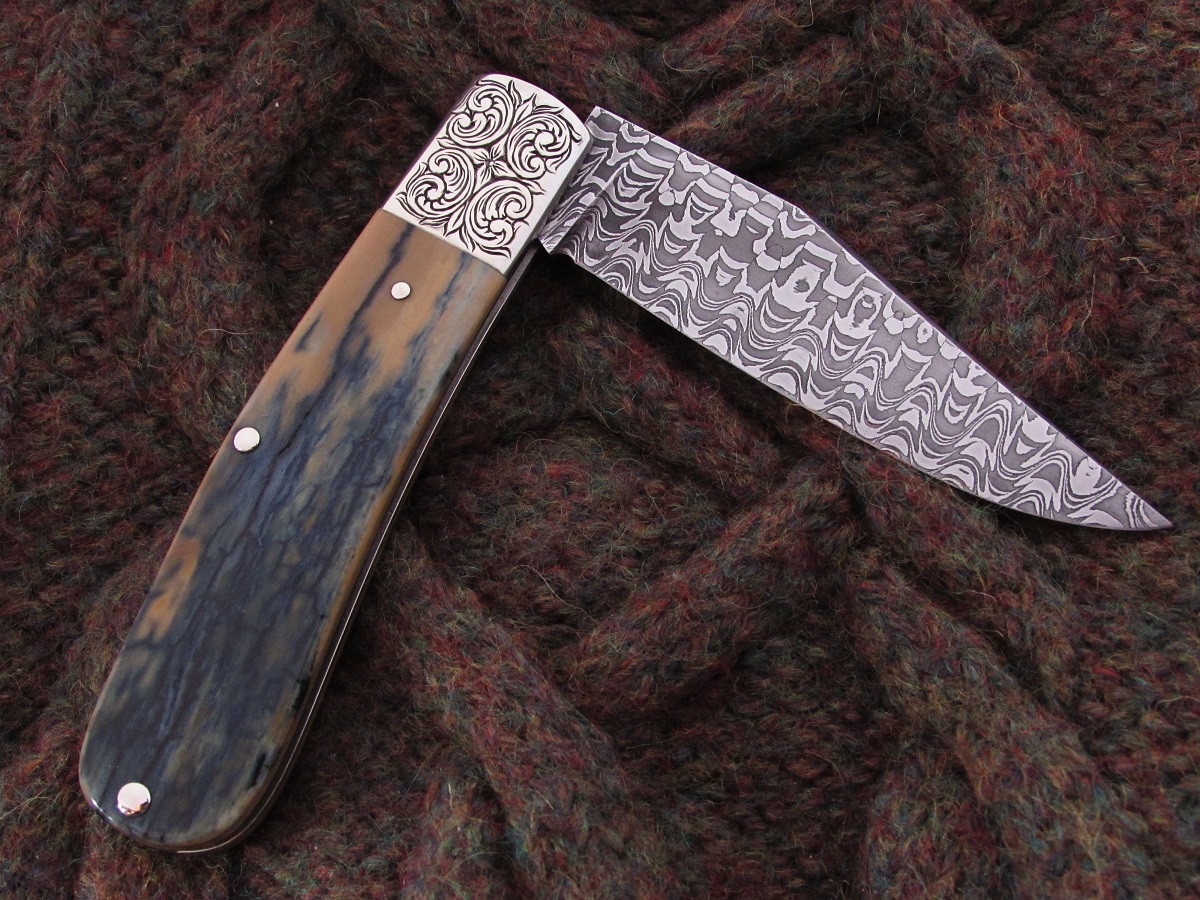so I took a class this weekend and made my first slipjoint, very satisfying indeed and learned alot as always.
The blade and spring are CPM-154
I'm thinking I'd like to (for now) heat treat carbon steel for my springs as I make a few more to learn
I can HT carbon steel in my propane forge.
Can someone assist with the HT guidelines for a carbon steel spring
for the SS , I used 1725 deg for 15 mins, quench between alum flat plates, temper 2x at 400 deg for 1 hour each
I probably could get my forge to hold this temp for 15 mins if I had to,
but nevertheless I'd like to know a carbon steel spring HT cycle
thanks


The blade and spring are CPM-154
I'm thinking I'd like to (for now) heat treat carbon steel for my springs as I make a few more to learn
I can HT carbon steel in my propane forge.
Can someone assist with the HT guidelines for a carbon steel spring
for the SS , I used 1725 deg for 15 mins, quench between alum flat plates, temper 2x at 400 deg for 1 hour each
I probably could get my forge to hold this temp for 15 mins if I had to,
but nevertheless I'd like to know a carbon steel spring HT cycle
thanks







